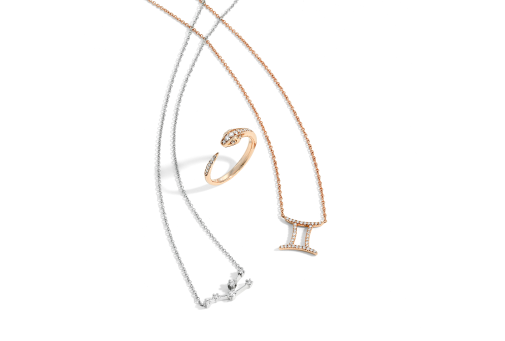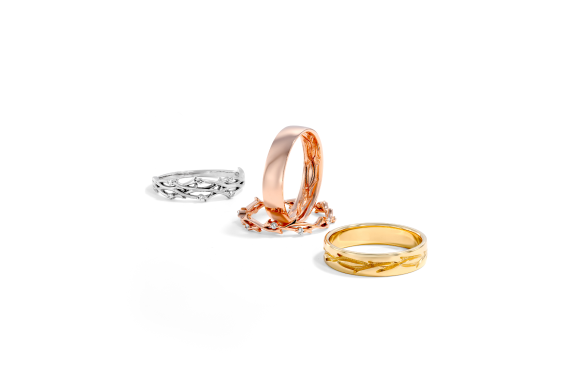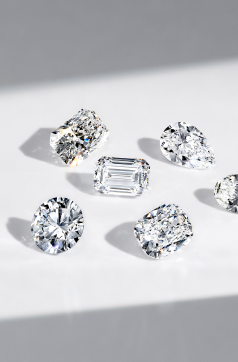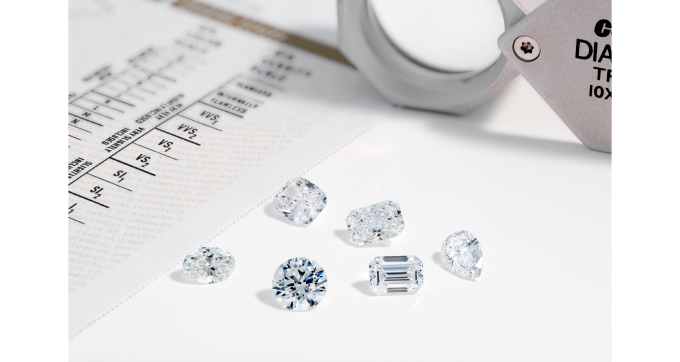4Cs - Carat Weight
Education Center
Education CenterEverything You Need to Know About Carat Weight
Understanding the significance of carat weight can help you get a heavier, bigger-looking stone for less money. Missing the point on carat weight makes you vulnerable to overpaying for a scrawny, ugly-looking stone. Understanding diamond weight is that important. Below, we'll share everything you need to know carat weight. We'll cover size, price, quality, and more. Let's start with the basics.
What is a Carat?
What even is a carat? We're not talking about the preferred snack of your favorite cartoon rabbit. It's a unit of measurement specifically used for defining the weight of a gemstone. Adults usually think diamond carats are way more fun than rabbits' carrots…
In other words, a carat tells you something about a diamond’s size… But not in the way you might be expecting. Since carat weight is related to the length, width, and depth of a diamond, the relationship between carat weight and size is not directly 1:1. In the image above, the carat weight increases by 1 carat (that is, 0.2 grams) and increases in diameter only by 1.5mm. This is an example of how carat weight and length/width of the stone is not necessarily a 1:1 relationship.
(Note: the ratio between carat weight and stone dimensions also changes depending on stone shape. So, stone size increases at a different rate per carat in round versus oval stones)
Carat Weight in Different Gemstones
Gemstones vary in density and anatomy. Rubies are usually cut to be deeper than diamonds. This means a 1 carat ruby will be a little smaller in dimensions than an equivalent diamond. This (or the contrary) is true for many other stones. Topaz is denser than diamonds, meaning it also looks smaller.
What Does 1 Carat Weigh?
One carat weighs 0.2 grams, or 0.007 ounces. A diamond weighing 1 gram would be 5 carats. Now that's a big chunk of diamond! Diamonds are also referred to in points. 1 carat is 100 points, while a half-carat diamond might be called a 50-pointer diamond.
A Brief History of the Carat System
Throughout history, carob seeds were used as a counterweight in measuring gemstones for jewelry. The word "carat" originally comes from carob, like the seed. It was thought – albeit incorrectly – that carob seeds were uniform in weight Methods of determining gemstone weight and corresponding value varied from country to country until carat weight was introduced as a universal measurement in 1907.
Does Carat Weight Impact Price?
There are a few different factors that all contribute to the price of a gemstone. The factors that impact the price of a gemstone are the 4 C's. Here's a quick breakdown:
- Carat: The weight of the diamond
- Cut: Refers to how closely the diamond’s cut matches the perfect proportions for its shape
- Clarity: Refers to the absence of inclusions and blemishes in the stone
- Color: Refers to the hue of the diamond, with colorless grades like D-F being the most desirable
Why Some Carat Weights Cost More
Larger stones are harder to find in nature so a 1ct diamond might cost four times more than a half-carat of similar quality. There are also carat weights that are considered more desirable. People seek out these "magic sizes" (1ct, 0.75ct, 0.5ct, etc.), and as a result, they cost a bit more. Looking for a diamond that is just a bit under, i.e., 0.92ct, 0.47ct, will land you a similar size stone while saving you a fair amount of money.
Conclusion
Carat weight is just one of many factors in choosing the right diamond. If it's the size and sparkle you're after, keep in mind that cut and diamond shape is what you should focus on when searching for your perfect stone. And, if you want to save money, look for stones slightly under a full-carat / half-carat / quarter-carat.



